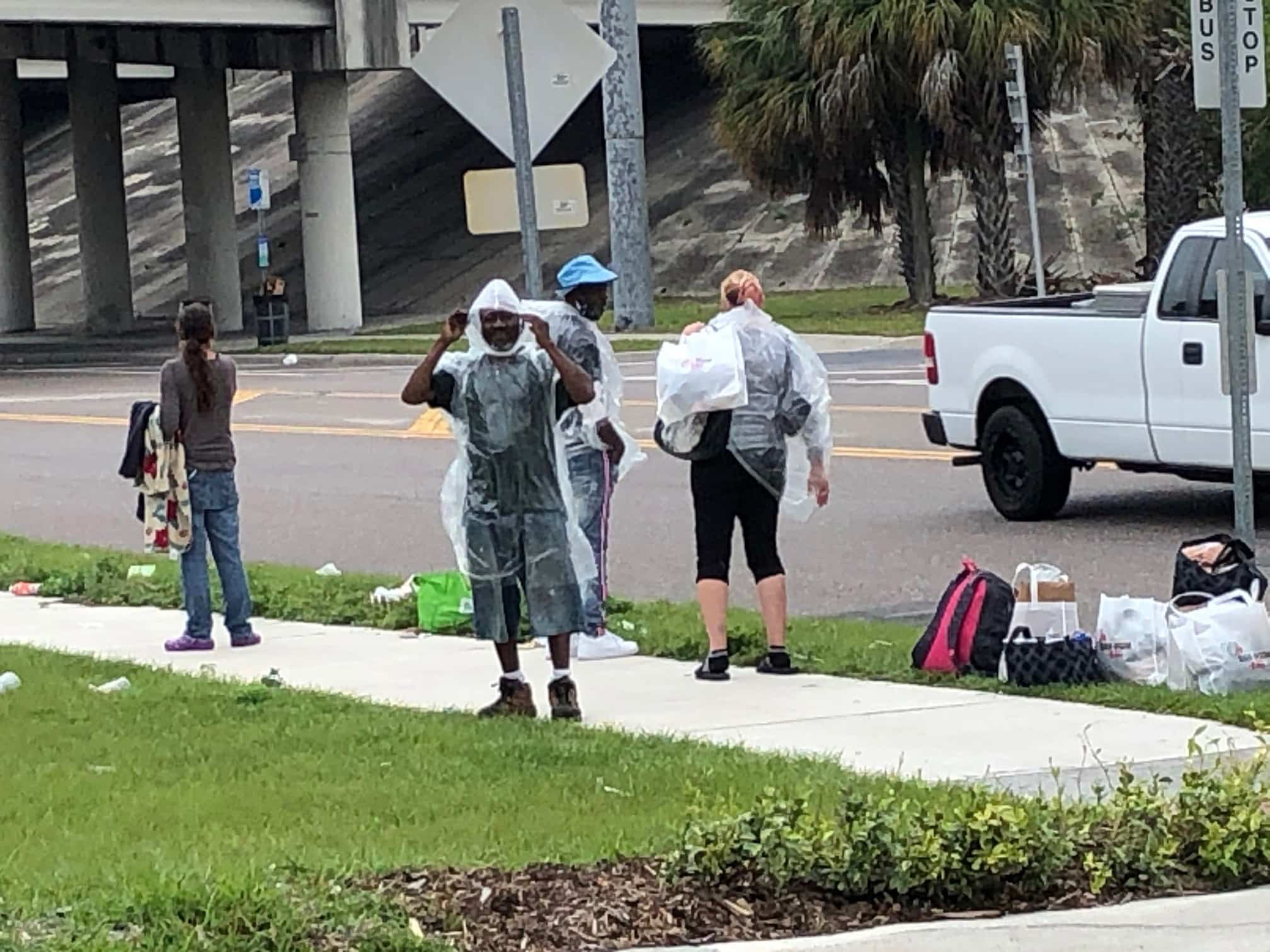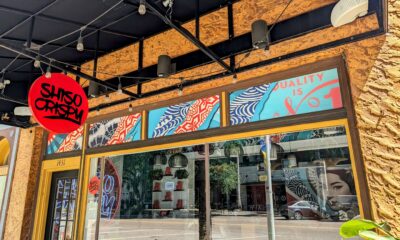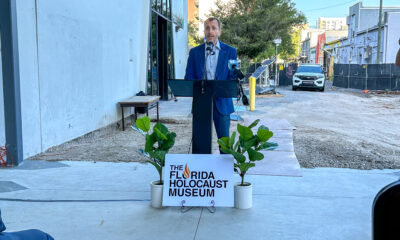Waveney Ann Moore: Public transportation is a lifeline for the disadvantaged

When Daystar Life Center announced that it was vacating its longtime downtown spot for a new building in a neighborhood a few miles south, executive director Jane Trocheck Walker touted an important advantage of the move.
It was on a bus line. That meant poor and homeless people helped by the agency would have easy access to its services, including groceries, help to apply for ID’s, a place to make telephone calls, pick up mail and use computers to sign up for government benefits and apply for jobs. Ready availability of public transportation also would make it convenient to seek assistance for rent, utilities, tax preparation and even bus passes.
The move to the modest, mostly African American neighborhood took place in 2019, with the nonprofit settling into a new, large, yellow building across the street from the Thomas “Jet” Jackson Recreation Center. Most welcome was the bus stop near Daystar’s driveway.
But bus service isn’t turning out as Walker had hoped. It’s all been documented by Sophie Wiltshire, a former Daystar volunteer, who recently graduated from Northeastern University in Boston with a major in health sciences. Her 23-page report finds that the bus schedule does not take into account the poor who must take public transportation to and from Daystar to meet their everyday needs. The most convenient bus, the No. 7, runs once an hour and its stop in front of Daystar offers no bench to sit on, much less shelter from Florida’s blazing sun and blinding downpours.
Walker, who told me Daystar keeps ponchos on hand for rainy days, sent along a photo showing soggy clients at the No. 7 bus stop in front of the agency. Some people appeared to be carrying bags of food and other donations. The canned and packaged food is usually supplemented with fresh produce from Daystar’s organic garden, which, by the way, was established by Wiltshire’s mother, Robin Clemmons, a fulltime volunteer.
Wiltshire, who is spending her gap year working as a medical assistant at Brigham and Women’s Hospital in Boston and applying to medical schools, spoke to me by phone about her transportation research and what prompted it.

Sophie Wiltshire
“The only issues we knew of were anecdotal. Issues that we were hearing from the clients,” she said. “I started asking people where they were coming from and how long it was taking them.”
For some clients, it could be a five-hour endeavor to travel to Daystar, get what they need and go back home, Wiltshire found. “Most people were coming from neighboring zip codes. They really weren’t coming from very far,” she said. “To take them an hour coming from the neighboring zip code was a bit much.”
Wiltshire had been volunteering at Daystar, working with front-end supervisor Leanne Scalli, when she decided to do her “capstone project,” or senior college thesis, on the transportation problems of the agency’s clients.
She had heard that Daystar, where 90 percent of its clients are classified at, or below, the federal poverty level, had been trying to get benches for the bus stop in front of the building. The effort had been unsuccessful. Along with benches, the agency had asked for a shelter and even a garbage container soon after its move to the Wildwood neighborhood, Walker said.
In case you’re wondering, the Pinellas Suncoast Transit Authority doesn’t simply plop down a bench at any and every bus stop. Bob Lasher, PSTA’s external affairs officer, said the location of benches and shelters is based on ridership. For instance, 25 people getting on at a particular stop per day would qualify that stop for a shelter. Daystar just hasn’t qualified – so far. A PSTA survey shows about 30 people getting off at the Daystar stop each day, but only about six get on. That doesn’t even merit a bench.
About 26 people get on at the stop across the street, a little south of Daystar, in front of the recreation center. “We are more concerned about where people wait for the bus,” Lasher explained. Hence, PSTA would like to put a shelter at that particular stop.
“We’d love to have them at every stop,” Lasher said, adding that much depends on funding. “For our size and population, we are among rock bottom for funding compared to other cities around the country,” he said.
As for Daystar’s request, Walker believes PSTA might not be considering several factors. For instance, the transportation agency first ran its numbers early in Daystar’s move to the area. A second count was done as the pandemic raged and the number of riders allowed on each bus was limited. The passenger limit meant that by the time a bus arrived at Daystar, it was full, Walker said. Clients simply crossed the street and took the bus to Central Plaza or other parts downtown, before making their way home by way of a circuitous, frustratingly long route.
Wiltshire based her findings on a 10-question survey that Daystar clients were asked to complete anonymously during a four-week period, from December 2020 to January 2021. Responses were entered into an Excel spreadsheet and the data imported into statistical software for analysis. The three main variables she addressed were mode of transportation – cars, public transportation, biking and walking – frequency accessing Daystar and travel time. Wiltshire’s report showed that 42.8 percent of those surveyed traveled to Daystar by bus, while 42.3 percent got there by car that they either drove or rode in as a passenger, 6.2 percent arrived by bike, and 8.9 percent walked.
Of those who took the bus, about 61.5 percent said they had to make transfers, while 38.6 percent took a direct bus. While some people may have taken one bus, they walked or biked long distances to get to the bus, or from the bus to Daystar.
“You would expect that people with longer travel times are less likely to frequent Daystar,” Wiltshire observed this week. “However, in this scenario, that’s not the case, because those traveling on the bus are the most needy Daystar serves, so they are willing to endure the long commute.”
She sent her report to PSTA.
“I think the main goal with it was to show them what the issue was. PSTA, as a whole, I don’t think they are aware of the real-life usage of the bus. They may think that there are six bus routes to get to Daystar, but realistically there is one,” Wiltshire said.
The No. 7, while the most accessible to Daystar, “runs the least frequently at only one every hour, while less accessible bus lines run more often,” she noted, going on to recommend that PSTA increase its frequency.
Lasher, though, says most buses run hourly.
“In general, there’s a lot of things they do well, but one bus an hour is very limited,” Walker said of the transportation agency. “We do work closely with them, but there are times when we need to look for solutions that impact the transportation disadvantaged people that live in this underserved community that Daystar serves.”
Daystar isn’t the only entity making demands of PSTA. Lasher said the agency has been working with groups in the Deuces area – the Historic African American business and entertainment district on 22nd Street S – to increase service.
“We know that once the SunRunner is up, we will need to connect other areas to that,” Lasher said of the region’s first rapid transit line that will run from downtown St. Petersburg to St. Pete Beach.
The SunRunner line is just the beginning, he said. “We are always looking at the routes. We look at routes throughout the year and implement changes three times a year.”
It’s possible that some concerns should be addressed sooner. Wiltshire’s research prodded me to drive to Daystar to scout out nearby bus stops. I parked at the recreation center and took a passing look at the much-used bus stop under the oak trees that is in line to get a shelter.
I walked north, past Daystar, to a stop I spotted under the overpass. I crossed an entrance to the highway to get there. It didn’t feel safe and I thought of Daystar clients carrying much-needed groceries as they rushed to catch a once-in-an-hour bus. Walker told me that she often sees clients sitting on the curb at that very bus stop with their feet stretched out into the road. They could use a bench.








Scott Willis
July 2, 2021at3:19 pm
Waveney Ann, excellent to see your name in print. I’m still required to have a lease for my dock. All three houses on my canal leg have failing pilings and the docks are dangerous.
Additionally don’t forget my previous tease about “this side up” painted on the underside of the Sunshine Skyway.
Pamela LeCompte
July 2, 2021at3:12 pm
Great article as always illuminating the true needs of the passengers that need these buses. Thank you for shining a light on it!